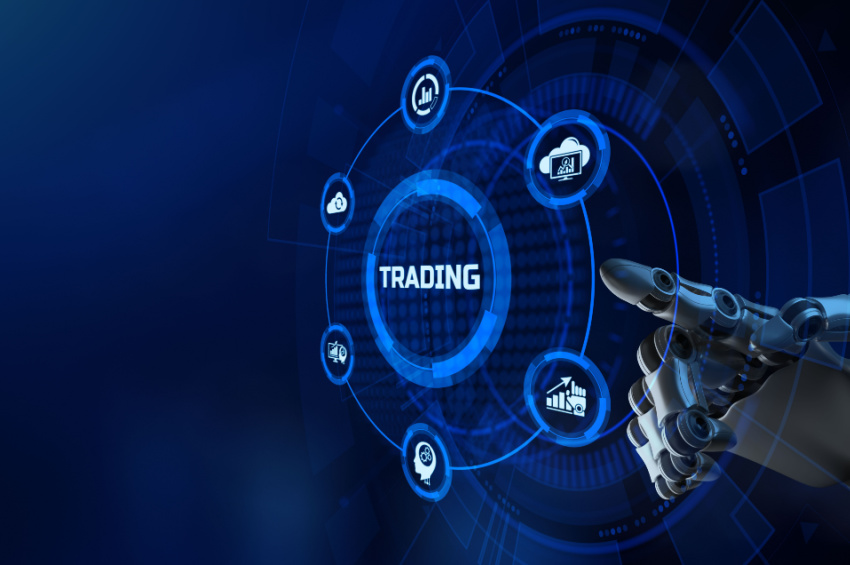Trade finance automation describes the implementation of technology to improve and optimize trade-related financial procedures. It involves the use of automation software and artificial intelligence (AI) to enhance the effectiveness, precision, and pace of trade finance operations. Here, let us discuss the rise of trade finance automation in today’s scenario.
Trade Finance Automation Sustained Global Trade Amidst the Pandemic. How
The COVID-19 pandemic experienced considerable effects on international trade, resulting in disruptions to supply chains and manual processes. The dependence on written records and manual reviews posed difficulties for trade finance functions as workplaces closed and working from home became the norm. In this setting, trade finance automation was crucial in sustaining global commerce. By utilizing automation and AI, financial institutions digitized trade finance processes, eliminating paper documents and facilitating remote collaboration. The difficulties confronting the trade finance industry focusing on the SME segment are:
Sustainability to expand trade finance.
Offering distinct services and creating a well-rounded ecosystem while expanding the supply chain.
An Overview of the Benefits of Finance Automation
Trade finance automation offers numerous advantages to banks and corporations engaged in international trade. Here are some important advantages of automating trade finance:
Cost reduction
Cost savings is one of the primary motivators for banks and corporations to employ trade finance automation. This is possible by eliminating manual labor, automating routine tasks, and reducing associated costs. Getting rid of manually entering information and processing documents reduces human error and the need for expensive back-office personnel. The saved expenses can be assigned to other strategic business areas, thereby promoting profitability and growth.
Increased efficiency
Automation of trade finance diminishes bottlenecks and lowers processing delays, resulting in increased efficiency. Through automation, previously time-consuming tasks, such as payment reconciliation and invoice matching, can be performed quickly and accurately. This enables employees to concentrate on higher-value tasks, such as sourcing new suppliers and building strategic relationships. The streamlined procedures accelerate the processing of customer requests, thereby improving customer satisfaction.
Risk mitigation
Trade finance entails a variety of compliance tests to mitigate risks and guarantee regulatory compliance associated with international trade. LC documents, invoices, and bills of lading can be checked and analyzed accurately by automation tools equipped with AI capabilities to identify potential compliance issues. Proper recognition and risk mitigation reduces the likelihood of financial losses and facilitates better management of overall risks.
Enhanced transparency & visibility
Trade finance automation offers visibility into the entire transaction lifecycle in real time. All parties, including banks, corporations, and customers, can utilize secure portals to trace and monitor the development of trade transactions. This increased visibility promotes transparency, diminishes uncertainty, and reinforces business relationships.
Regulatory compliance
Automating trade finance procedures enables corporations and banks to comply with regulations such as AML (anti-money laundering) and KYC (know your customer) checks. Automation assures internal controls and timely reporting, decreasing the likelihood of fraud and noncompliance. It permits banks to meet stringent regulatory requirements and maintain market reputations.
Embracing AI & Finance Automation- A Necessity for Business Continuity
The COVID-19 pandemic generated significant disruptions in global trade for a duration of two years, yet the adoption of AI and automation was essential in sustaining the flow of trade finance.
During the pandemic, remote work became the norm, posing an obstacle for trade finance and trade, which relied extensively on paper processes. While financial institutions transitioned seamlessly to remote jobs, the manual nature of trade necessitated adjustments for operational efficiency.
The trade finance sector was longing for a streamlined, paperless system, but a few barriers like multiple stakeholders, lack of documentation standardization, diversified regulatory systems, and inadequate digital infrastructure prevented widespread adoption. However, the urgency to implement automation grew as lockout measures were implemented.
Also Read: DigiLocker’s Upgrade Ignites Growth Opportunities for MSMEs
To deal with these challenges, workplaces adopted innovative digital capabilities such as AI and automation software that use machine learning. These technologies facilitated seamless trade financing by enabling paperless document checks. AI systems examined documents, compared them to predefined rules and compliance requirements, and updated their rules in accordance with the most recent regulations.
AI and automation increased productivity and enabled institutions to implement adaptable location strategies, promote a healthy balance between work and life, reduce risks and costs, and redirect workloads based on capacity. While technology cannot wholly replace human expertise, it strengthens compliance teams by freeing them of repetitive duties so they can focus on resolving discrepancies uncovered by automated checks.
The COVID-19 pandemic brought about this change, prompting trade finance banks to rapidly implement automation. This event transformed all industries by emphasizing the importance of digital capabilities and reducing dependence on manual reviews and paper documents. Trade finance institutions must prioritize digital resiliency and prepare themselves for future challenges. Thus, AI and automation are not just a luxury for enduring success in trade finance; they are a necessity.
The bottomline
The pandemic hastened the implementation of finance automation, reshaping the industry and reinforcing the need for automation and artificial intelligence. As banks adopted novel technologies, they maintained operational efficiency and enabled their teams to prioritize higher-value tasks and adapt to shifting work environments. The trade finance future is dependent on adopting automation and AI. By prioritizing digital stability and staying on top of evolving obstacles, trade finance companies can confidently navigate the constantly shifting global landscape, paving the way for the future of global trade to be more effective, resilient, and prosperous.



